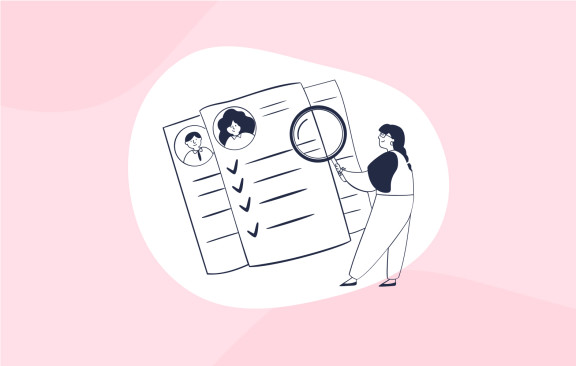Let’s get something cleared up, here…
You need good suppliers in order to have a successful eCommerce business.
In time, you’ll realize that you rely on your supplier to keep your business operational.
Today, we’re going to talk about how to find a kickass supplier, how they could make (or break) your store, how to really build that supplier relationship, and how to deal with sticky situations.
Oh, and we’re going to provide you with a supplier evaluation checklist, free of charge!
Let’s dive in.
How a supplier can make or break your store
Did you know that 89% of shoppers will stop buying from an online store if they see or hear of one bad experience?
That’s… frightening.
Keeping your customers happy is key when starting a business, sure.
But what about your relationship with suppliers?
Not only do suppliers provide you with the goods and services you need in order to run a successful business, they’re also an important source of information about your products!
To show just how important it is to maintain a good relationship with your supplier, take a look at the graph below:

The graph on the left shows that if you and your supplier share an adversarial relationship… your sales won’t be as effective.
Compare that to the graph on the right, which shows that maintaining a good supplier relationship with your supplier will leave a surplus in your business (as well as relationships).
With this information in mind, you may be wondering:
How can I maintain a steady, prosperous relationship with my supplier?
The SaleHoo team (and I) have you covered! Here are some quick tips to remember in order to keep your relationship strong:
- Communicate with your supplier regularly. Make a point to reach out to your supplier at least 2-4 times per week. Talk about which of your products are selling well, how your business is doing, and how satisfied you are working with them! A little appreciation goes a long way.
- Address issues right away. Do not leave your supplier in the dark when something goes wrong. If a customer receives a poor product and leaves a crappy review on your website, and demands a refund, be sure to reach out to your supplier ASAP to bridge the gap. Figure out what may have happened and how you can prevent it in the future. If you keep your negative emotions pent up, your supplier will think everything is A-ok until you randomly blow up one day.
- Pay your supplier’s accounts on time. This goes without saying, but… pay your bills on time. Just like you, your supplier needs to make money in order to keep their business operational.
- Provide any new information on your business promptly. Tell your supplier about changes in key personnel, new products you may want to try, special promotions you’d like to do, and so on.
Developing a good relationship with your supplier isn’t complicated...
As long as you’re communicative, tell them your needs and standards, treat them fairly, and pay them on time, it’ll be a smooth sailing supplier relationship. Yes, it’s really that easy!
Now, let’s go over the different types of suppliers to figure out which is right for you.
How to determine the type of supplier you need for your business
There are a few different types of suppliers you’ll run into…
- Manufacturers
- Wholesalers
- Dropshippers
- Importing agents
Let’s go over the differences with each supplier, so you have a better understanding of who (and what) you want.
Manufacturers
A manufacturer is a company that produces items for use or resale.
Because manufacturers are the first cog in the chain of supply, they can offer very low prices on items. However, their minimum orders are often very high.
Usually, manufacturers sell direct to suppliers such as light and bulk wholesalers and liquidators.
Therefore, most retailers find that manufacturers are unreachable (in terms of product sourcing). Keep in mind that some smaller manufacturers will work direct with retailers. It never hurts to ask!
Wholesalers
When you buy products from a wholesaler, you don’t have to buy in bulk.
Wholesalers are able to house a lot of products for you which means, you’re getting products at a discounted price.
In other words, the more you buy, the better the price!
A manufacturer is able to pass on better prices to a wholesaler because they typically buy in bulk and have the storage space to house the goods until they’re sold.
Of course that's the benefit of wholesale. The downsides are just needing lots of capital and storage space!
Dropshippers
Using a dropship resource means there is no volume purchasing, because you’re buying one product at a time. When you compare this with wholesale suppliers (where products are purchased up front), a drop shipping model means you’re not paying for the product until they’re sold.

The downside of dropshipping is the price. Because you don’t buy in bulk, you can’t get the best price for the product. With wholesale suppliers, you can.
There are a few other downsides, like not being able to brand yourself and potentially long shipping times.
But it also means no holding of inventory, no shipping or packing, and in some cases no need for customer service! (For example, FBA (fulfilled by Amazon) will take over support for you.)
Check out our full guide to drop shipping for more info!
Importing agents
Agents can be quite tricky at first, because they’re nothing like wholesalers, dropshippers, or manufacturers.
Rather, they play the role as the middleman. They bring customers and clients together and, sometimes, do it for free.
To give you an example of what we mean, imagine eBay as an import/export agent, AliExpress is a manufacturer, and Amazon is a department store looking for goods that AliExpress sells.
In this scenario, eBay would act as the middleman between AliExpress and Amazon. eBay would see that Amazon is interested in acquiring goods that AliExpress owns, and works hard to bring the buyer and seller together.
Notice how eBay would not be taking title to the goods and would not provide the services that a distributor would perform.

There are two types of agents to look for (if you choose to take this route)...
- Traditional import/export agents. An export agent works in the country where the product is produced. An import agent is based in the country where the product will be sold, in which case, represents the buyers.
- Brokers. A broker is an independent agent who brings buyers and sellers together (as explained in our scenario above). A broker differs from the traditional import/export agent because they don’t usually represent a company. Instead, they’re hired to bring together one-of-a-kind or nonrecurring deals.
Now that you know which type of supplier you’d like to work one-on-one with, it’s time to discuss what to look for in the supplier of your choosing and how to work on building that supplier relationship with them.
What to look for in a supplier
The very best suppliers provide suitable goods and services at the best prices (and in the right time frame) for your business needs.
Quality of items
It’s crucial you test the products you’ll be shipping to customers.
This should go without saying, but you’d be surprised how many people “forget” this step.
You already know this, but...
Keeping your customers happy is one of the leading factors when it comes to running a successful business.
With that in mind, why would you want to send products to customers without testing them first?
The smart answer? You wouldn’t.
Here’s the thing: if you, yourself, don’t test out the product, how will you write perfect product descriptions?
Don’t let your customers purchase an item without telling them how to use it, or this might happen…

Pretty embarrassing, right?
Moral to the story: order product samples in order to know the quality of the item (and how to properly use the item).
Quality of support
While you shouldn’t have to jump through hoops to have a good supplier relationship, you’re going to need to work hard at first to get a solid foundation of trust and, more importantly, support.
Think of your supplier as your business partner. After all, without them your business would be a total flop!
Here’s a prime example of what the support system should look like for you and your supplier:
Let’s say you share a potential strategy that’ll increase the volume of your sales. A supportive supplier would lookover what needs to be done (on both their end and yours) to figure out how to meet this demand.
Suppliers are some of your greatest advocates. As long as your respectful of their needs, they’ll be respectful of yours.
Proven track record
Here’s the thing: Your supplier is basically your business partner.
They handle your products, get a list of who’s purchasing the items (for shipping purposes), and control a large part of your eCommerce store.
Before you pick out any old Joe to be your supplier, I suggest fully vetting them to ensure they’re a good fit.
A good way to do this is by:
- Asking for customer referrals.
- Making sure they’ve been in business for at least 10 years.
- Figuring out their holding capacity.
If the supplier that you’re vetting is nervous to tell you something, or avoids talking about something all together, I don’t suggest continuing the relationship with them.
Lucky for you, the SaleHoo team has fully vetted our suppliers - which ends up saving you time and aggravation!
Supplier evaluation checklist
Differences between your needs and what your supplier is able to offer can add extra costs, cause delays, and may even damage your organization's reputation in the long run.
This Supplier Evaluation Checklist will help you to figure out your organization’s needs as well as understand how your supplier can meet your expectations.
Once the product to sell is determined, find a handful of potential suppliers to evaluate
After you’ve figured out which product(s) you’d like to sell in your eCommerce store, the next step is finding a supplier who offers the product you need.
Let’s say you’re going to sell jewelry (which, buy the way, is a fantastic niche to get into - find out more here!).
When looking for suppliers who sell jewelry in the SaleHoo directory, we find some pretty awesome suppliers, such as:
Each supplier offers a wide range of jewelry for you to choose from and each supplier varies in price.
From here, you would find a piece of jewelry from each supplier to test out, have it shipped to you, and get a feel for what you’d feel confident selling on your store (based on the weight, how well it looks, and other key attributes).
Once you’ve figured out which supplier you’d like to go with, the SaleHoo team can help you get the gears turning!
Click here to get the supplier evaluation checklistChoosing a supplier for your business and writing them an email
Once you’ve evaluated your supplier(s) and you’re ready to make your choice, there are a few final things you need to know.
Specifically, send them this short questionnaire.
Supplier questionnaire & template
Here are the details you need to know:
Payment details
You want to know exactly how much you’re paying per unit. You’ll also want to know of any bulk discounts you might be able to get. Get this in writing.
Refund policy
Secondly, you’ll want to know exactly what their refund policy is. There shouldn’t be any debate when the time comes to refund a customer!
Dispute resolution
Next up, you’ll need to have a clear plan of action when a dispute arises. If a consumer is unhappy with a product (or with delayed shipping times) and threatens your business, will your supplier work hard to help you solve the problem?
Seller guarantees
Finally, it’s vital to both your company and consumers to know if there are any guarantees that come with the supplier. Will they offer a 30-day money back guarantee if the consumer doesn’t like the product they ordered? Or can they only return it if it’s defective?
Get this information from your soon-to-be supplier and keep it handy (you never know when you might need it)!
Negotiate great terms with the supplier
There’s definitely an ‘art’ to negotiating with suppliers (and anyone, for that matter).
You want to find a supplier who will go the extra mile for you once you’ve proven yourself to be a good client, but also someone you deem worthy of friendship.
Negotiate bulk pricing
There may be some hidden gems for you to find when purchasing products in bulk.
Though, your supplier might not tell you this upfront. As it turns out, buying in bulk reduces the cost per unit and can even reduce the amount of money you pay in the long run!
However… there are some slight disadvantages when buying in bulk, such as:
- Upfront fees. Buying in bulk might mean that you have to pay fees upfront in order to get items at a lower price. Wholesalers may require you to obtain a resale license.
- Storage space. If you’re drop shipping items, you don’t necessarily have to worry about this. If you’re not, however, and you plan on buying items in bulk, you’re going to need to find a place to put your items. This can be a huge pain, especially if your products sell quickly (and you want to expand).
If your supplier doesn’t offer discounts on bulk pricing, you could always...
Negotiate discounts based on a performance target
If you’re confident in your ability to hit sales goals, discounts based on performance are an excellent way to go.
It’s a win-win - if you hit the sales numbers you get a great price. If not, your supplier gets a better deal.
Plus, it’s a great incentive to push your sales goals. Not only do you make more money from the sales, but you get a better price, which lowers costs!
Build rapport
Building rapport with your suppliers is beneficial for both parties especially if you really want to work on getting a better supplier relationship.
You get to know your supplier better, and they get to know you. Which leads to more trust and, ultimately, a better supplier relationship.
How do you build rapport? Simply by...
- Finding common ground. Use open-ended questions to discover personal information about each other. Perhaps you share the same hobbies, grew up in a the similar city, or support the same sports team as your supplier.
- Practicing good communication. Remember your suppliers name, listen carefully to what they’re saying and keep a level head (even if you disagree). By doing this, you’re establishing trust and empathy with your supplier.
Conclusion
In this guide, we covered exactly how to evaluate and choose a supplier for your eCommerce business.
There are some common pitfalls to avoid, but we’ve given you a map of the terrain so you have nothing to worry about.
Now, it’s up to you...
Don’t worry - you’ll do great!
As long as you use your Supplier Checklist, review overlooked details (such as return policies, dispute arrangements, and bulk pricing fees), and keep a level head when talking to potential suppliers, we know you’ll find one who exceeds your expectations!
If you have any questions, feel free to reach out to us! And one last thing...
If you’ve found this article helpful, be sure to share it with your friends! As always, thanks for counting on SaleHoo to provide you with the tips and tricks needed to create your dream store.












3 Comments